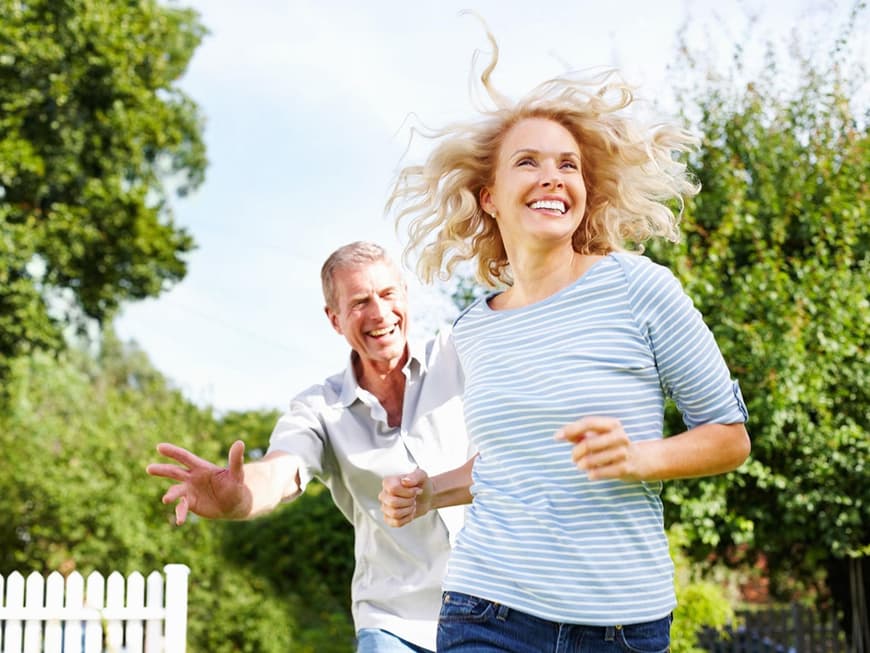How can you protect your joints?
"Sports that are easy on the joints, such as swimming or cycling, promote joint regeneration. This is because it stimulates blood circulation and at the same time builds up muscles in a gentle way."
Is it true that jogging destroys joints?
"Yes and no. In principle, exercise is one of the health-promoting measures - also for the joints. Nevertheless, jogging can damage your joints if you don't pay attention to the following three factors: the right technique, the right shoes and a surface that is not too hard. Excessive strides, for example, put unnecessary pressure on the joints. The right shoes for cushioning are also very important. My advice to all joggers: get advice from a specialist when buying shoes and treat yourself and your joints to professional running training."
What exactly is osteoarthritis?
"In order to move our arms, legs and torso without restriction, our body needs flexible connecting elements such as knee or hip joints. To prevent the ends of the bones from rubbing directly against each other, there is cartilage mass at the contact points. This buffer zone protects the bones during every movement. Over the course of a lifetime, however, they wear out and the cartilage layer decreases. If this leads to unnaturally heavy wear and tear and massive cartilage damage for various reasons, experts speak of osteoarthritis."
What is the best sport for the joints?
"Because the majority of your weight rests on the saddle when cycling, the strain on your joints is much less than when jogging, for example. Swimming is also considered a particularly gentle sport, as the water carries around nine tenths of the body."
Is joint wear and tear actually programmed?
"Age plays a role, of course. But being overweight, lack of exercise, extreme sports and accidental or genetic misalignments such as bow legs are among the main causes."
Is there anything I can do to prevent this wear and tear?
"Regular exercise trains the joint muscles and promotes blood circulation. With a healthy diet, patients at risk avoid being overweight, which puts constant pressure on the bones."
Can the joints regenerate?
"If cartilage damage is already present, the only thing that can be done according to current knowledge is to prevent the cartilage wear from progressing. Reconstruction is not yet possible. One of the few exceptions is the cultivation of the body's own cartilage tissue, which is then implanted into the body. However, doctors only resort to this in extreme cases."
What do you think of arthroscopy with surgery?
"Arthroscopy as an imaging aid to arthroscopic surgery is particularly important in the treatment of cartilage damage and free joint bodies and makes perfect sense."
Does a hyaluronic acid injection help with joint problems?
"Biochemically produced hyaluronic acid works as well as the body's own hyaluronic acid as a lubricant. In most cases, good results are achieved, especially with minor cartilage damage."
What do you think of remedies such as curd wraps?
"A great deal. Home remedies such as curd compresses, ice packs and elevation are particularly helpful for acute irritation such as swelling."
When do you recommend an artificial joint?
"Only in cases of very advanced joint wear and tear and if the quality of life is significantly impaired. But only if conservative therapies such as physiotherapy have not led to a satisfactory result."
You should better avoid this
Unfortunately, predisposition is a cause of osteoarthritis. However, there are some habits that accelerate cartilage wear and tear. We can change them.
Lack of exercise
Exercise supplies the tissue with nutrients. It works like this: During exercise, fluid from the cartilage mixes with fluid from the joint capsule, which is rich in nutrients. When the load is removed, the cartilage absorbs the rich fluid like a sponge. There is also liquid collagen for the joints (e.g. "CH-alpha-Plus", pharmacy).
Overloading
One example is the so-called "runner's knee" in over-ambitious or untrained runners. Muscles and tendons become inflamed due to overloading.
Overweight
The many kilos put pressure on knee and ankle joints. High heels Regularly wearing high heels increases the risk of osteoarthritis. Heels three centimetres high are best.


